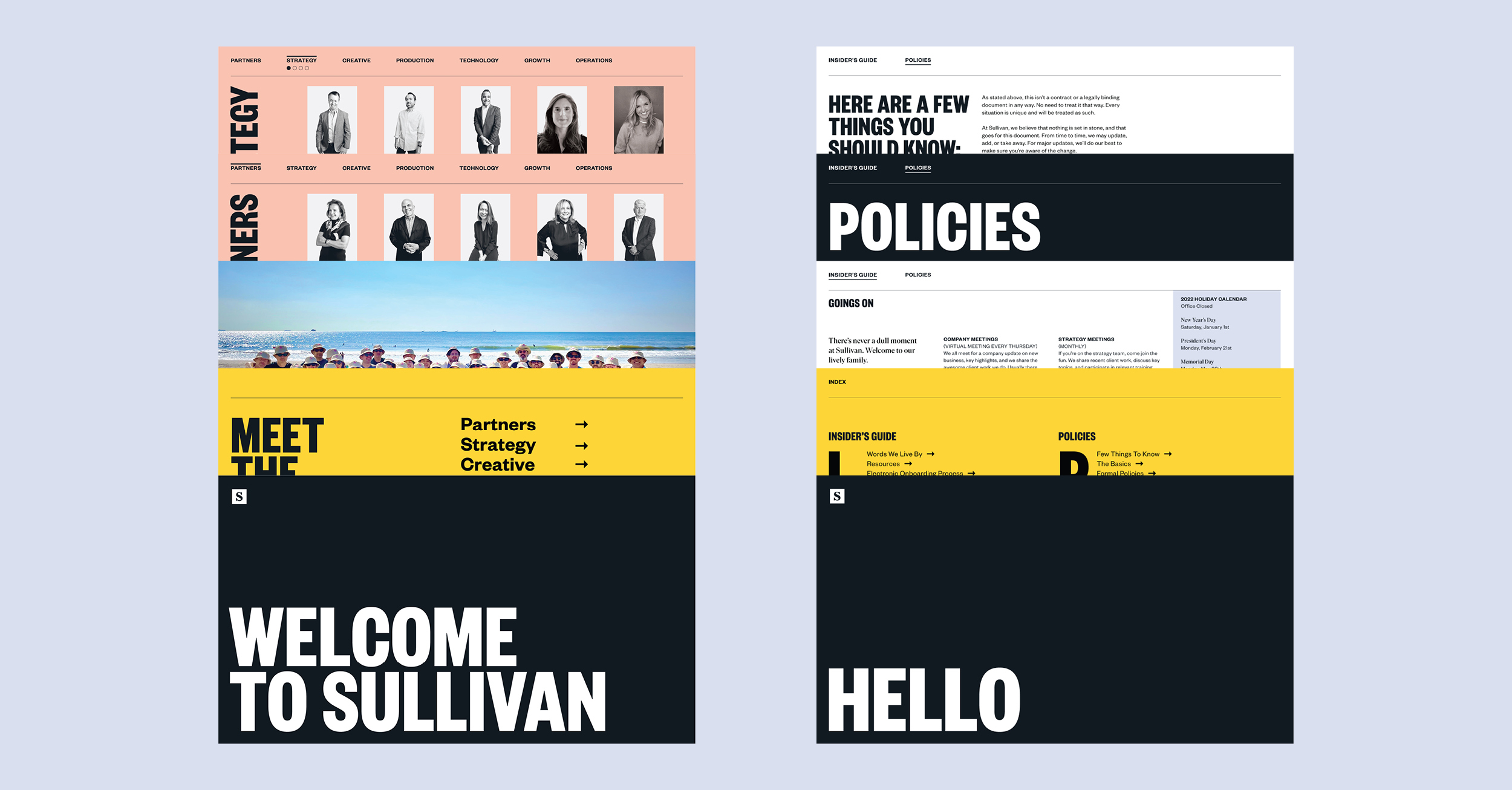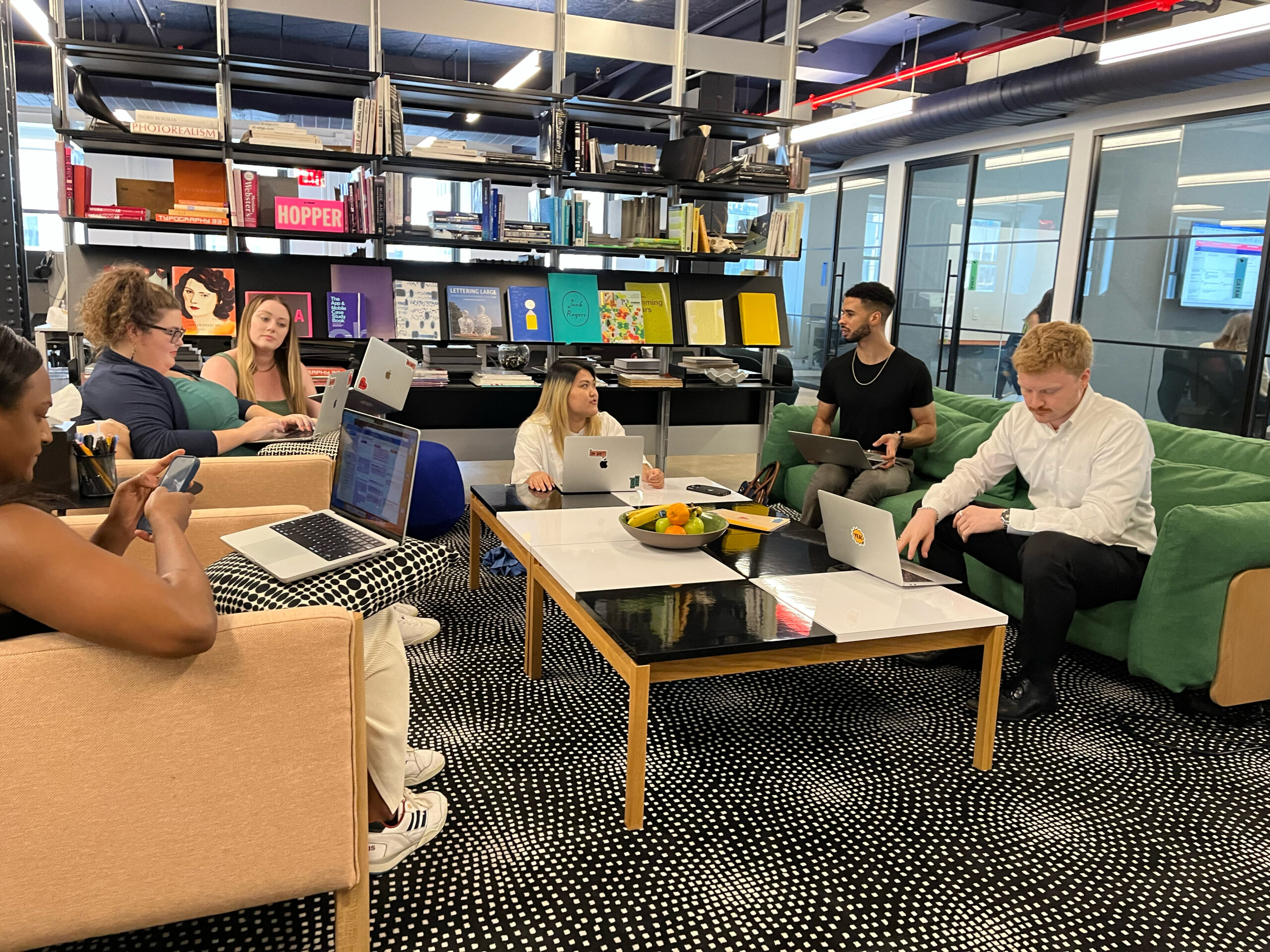Bringing an Employer Brand to Life
In today’s competitive job market, it’s critical to take the principles and guidelines that you’ve documented in your employer brand and put them into action across your recruiting journey to drive conversion and your employee journey to encourage engagement and retention.
What exactly is an employer brand? If you’ve read some of our other pieces on the subject you’ll know that an employer brand is a promise made to your current and future employees. It outlines what they can expect working at your company – the collective purpose, the culture, the people, and the work they will be contributing to – and what you expect of them.
At the beginning this usually looks like a deck, complete with a bespoke positioning, messaging frameworks, reasons to believe, and more ideas about shaping that experience.
But until that plan is put into action, that’s all it is. So how do we take a fleshed out employer brand that’s landed on an executive’s desk and activate it across the entire employee experience from recruitment to onboarding to long-term engagement?
While we’ve built comprehensive employer brands for leaders in tech, financial services, and more, we applied our experience to our own employer brand and activated across our channels.
Here we’ve analyzed each stage of the essential employer brand journey and have shared our insights about how to activate your brand across them.
Awareness
Before they know what it’s like to work with you, they need to know who you are. Think about how you’re connecting with potential recruits. This is the first place future employees see you and start to form their impression.
As you’re recruiting, it’s imperative to unify your messaging across every channel available to you. Consider how the message you’re presenting on a job posting synchronizes with your digital and physical presence elsewhere. Are you sharing information over LinkedIn, Instagram, or Twitter? Are you running any digital campaigns for your company? Do you make appearances at recruitment fairs and college campuses?
At Sullivan, you’ll find us in every one of those spaces. We recently reimagined our job descriptions to infuse them with language that speaks to our new employer brand. We’re also regularly encouraging our current employees to extend our postings to their own network, allowing us to cast a wide net in our search for exceptional talent. You’ll find us publishing thought leadership like this piece to our channels as well. There, we offer answers to questions that intrigue us and help candidates understand our style of thinking.
Interest
You’ve piqued the interest of recruits, now what do you do? How do you convert a potential candidate into an employee?
This stage isn’t just centered on the interview(s), it’s also encompassing how you reinforce your company before and afterwards. Map out the journey. What are the touchpoints? Where are there points of friction? How can you overcome them? Where are there opportunities to reinforce your employer brand?
When we think about how interest is cultivated, we immediately go to our website experience. For a small, independent agency like ours, our website does a lot of heavy lifting to shape our perception to visitors. A candidate should be able to visit our website and not just walk away with a deeper impression, but a clear understanding of our unique value proposition.
Onboarding
Onboarding can and must be more than what the health plan looks like and how the PTO policy works. Use your developed employer brand to craft a branded onboarding program that communicates things like your guiding principles, purpose, and your definition for success. This ensures that new team members feel aligned—they understand the expectations in their employer-employee relationship.
This could be considered the most crucial stage of activating your employer brand. In this period of time, right after they join the team, recruits need to feel valued, understood, and connected. Without a doubt, they need to be assured that they are set up for success.

After we’ve briefed you on the essentials of your employment at Sullivan, we take time to educate on our core values, and not just what they appear like on paper, but how we live them out every day. Ideas like “Two Feet In”, highlighting our commitment to tackling problems head on and supporting our fellow teammates, or “Fall in Love”, a reminder that we’re always fully invested in the work we take on.
Ongoing engagement
Marketers know that you never truly stop reinforcing the brand that you’ve built. The same goes even when you’re dealing with your colleagues. Look for opportunities to deepen employee engagement at every juncture.
Consider bringing your employer brand into the evaluation process so you can discuss with employees how they’re delivering on expectations set by the brand. At Sullivan, we center our evaluations around our guiding principles, the ideas that we feel govern success for every member of our team.

Similarly, key milestones can shape the feelings of existing employees. Consider what significance your employer brand brings to work anniversaries, company announcements, and more. Our Founder and Managing Partner, Barbara Sullivan maintains an incredibly steadfast commitment to celebrating important moments in the lives of every single employee at Sullivan. Even if you didn’t realize your birthday was coming up, you will be reminded promptly after coming into work.
Even think about the environments and apparatuses that employees are dealing with on a daily basis. Does the design of your physical space reinforce your core beliefs? Can employees feel connected to their work and support through something like a modern intranet designed around their needs?

Conclusion
Your employer brand is more than what you can document in a file. It’s a lived experience that’s shared by every individual that you employ. It inevitably morphs and manifests into different forms and moments as time goes on. Those moments tell a story about an employee’s time with your company—one that begins the second they realize you have a need they can fulfill and continues on throughout everyday they’re on your team. How are you choosing to tell that story?
